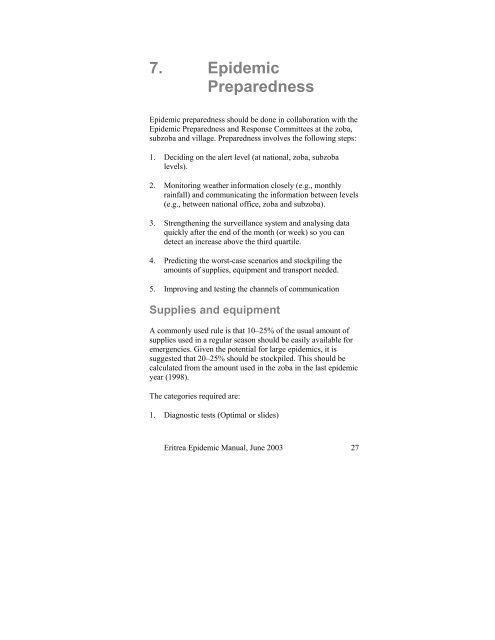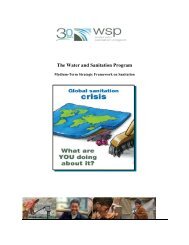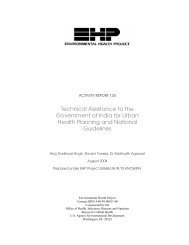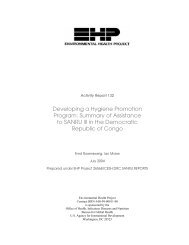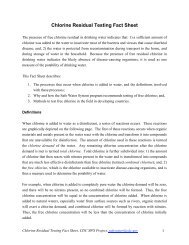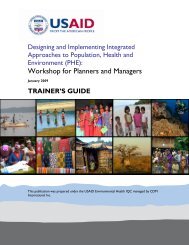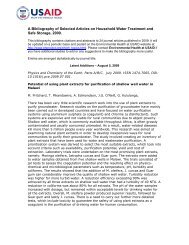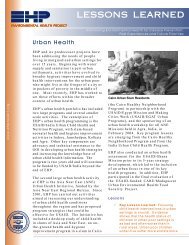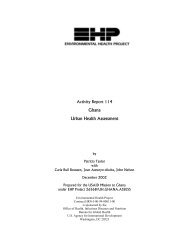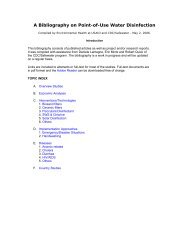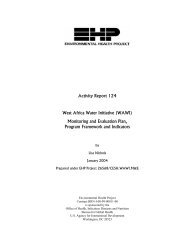Malaria Epidemic Forecasting and Preparedness Manual
Malaria Epidemic Forecasting and Preparedness Manual
Malaria Epidemic Forecasting and Preparedness Manual
Create successful ePaper yourself
Turn your PDF publications into a flip-book with our unique Google optimized e-Paper software.
7. <strong>Epidemic</strong><strong>Preparedness</strong><strong>Epidemic</strong> preparedness should be done in collaboration with the<strong>Epidemic</strong> <strong>Preparedness</strong> <strong>and</strong> Response Committees at the zoba,subzoba <strong>and</strong> village. <strong>Preparedness</strong> involves the following steps:1. Deciding on the alert level (at national, zoba, subzobalevels).2. Monitoring weather information closely (e.g., monthlyrainfall) <strong>and</strong> communicating the information between levels(e.g., between national office, zoba <strong>and</strong> subzoba).3. Strengthening the surveillance system <strong>and</strong> analysing dataquickly after the end of the month (or week) so you c<strong>and</strong>etect an increase above the third quartile.4. Predicting the worst-case scenarios <strong>and</strong> stockpiling theamounts of supplies, equipment <strong>and</strong> transport needed.5. Improving <strong>and</strong> testing the channels of communicationSupplies <strong>and</strong> equipmentA commonly used rule is that 10–25% of the usual amount ofsupplies used in a regular season should be easily available foremergencies. Given the potential for large epidemics, it issuggested that 20–25% should be stockpiled. This should becalculated from the amount used in the zoba in the last epidemicyear (1998).The categories required are:1. Diagnostic tests (Optimal or slides)Eritrea <strong>Epidemic</strong> <strong>Manual</strong>, June 2003 27


